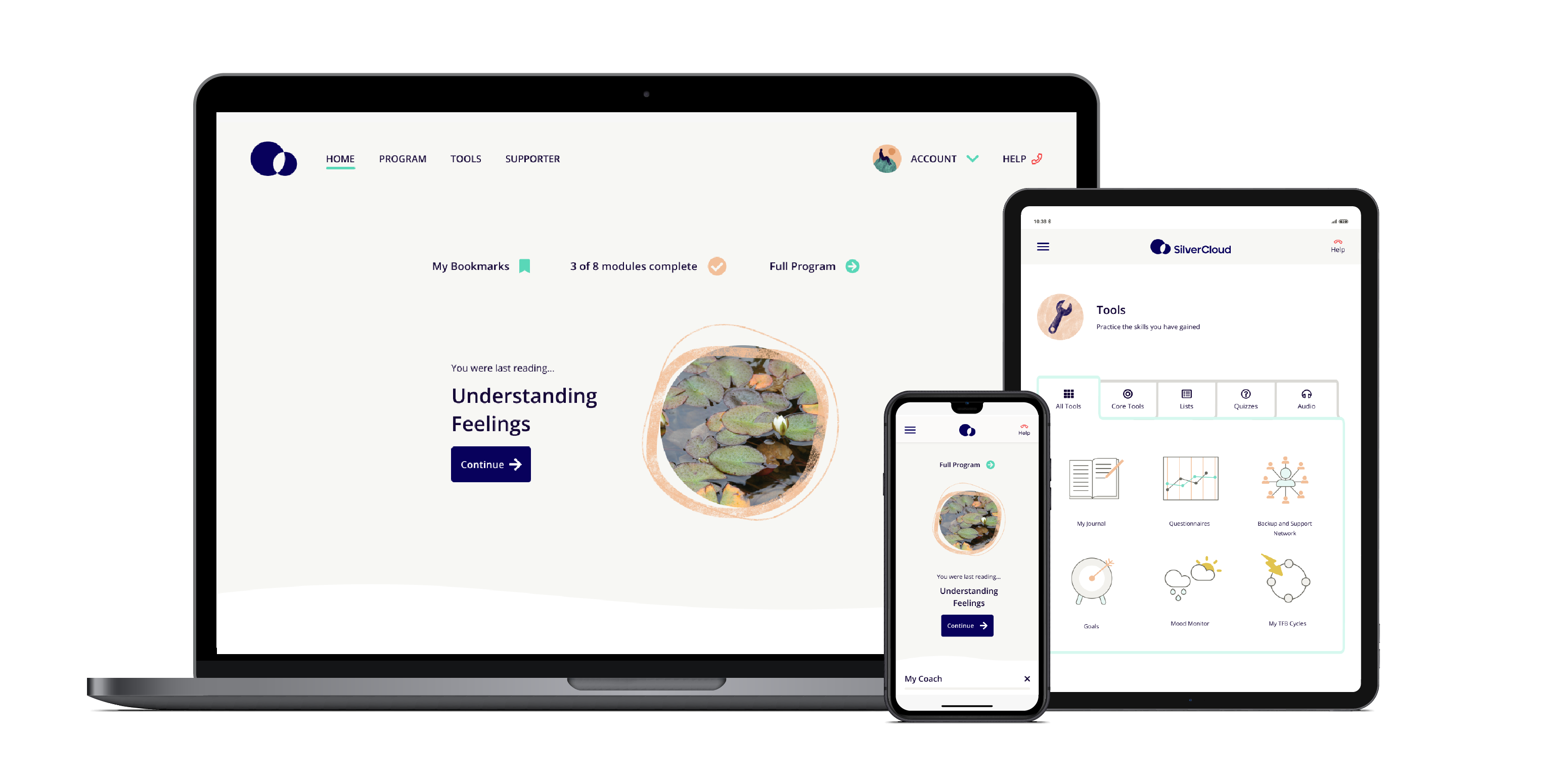Almost all of us will be familiar with feelings of anxiety. It’s a natural response we’ve evolved to have when we feel we’re in danger. But for some, the anxiety response can start to be triggered too frequently, without any real “threat” present, which can lead to a mental health problem.
Anxiety and anxiety disorders are on the rise across the world. Emerging amongst these are many cases of low-level anxiety. This is a quiet, constant feeling of being on edge that doesn’t make life impossible, but is still very real and hard to manage.
Some people adapt to living with low-level anxiety, but this chronic condition can mark the beginning of a more severe mental health disorder, if left untreated.
The current landscape of mental health
The number of people with mental health disorders has been rising for some time now. Back in 2019, the World Health Organization reported that 1 in 8 people had some kind of mental health disorder, with approximately 301 million people living with anxiety related conditions. Children and adolescents made up for 58 million of these people.
But Covid-19 made an existing problem, even more complex. Factors like grief and loss, financial instability and social isolation or loneliness became all too common, taking a toll on global mental health. In 2020, cases of anxiety rose by over a quarter worldwide, and depressive disorders increased by 28%1. Even as we begin to look beyond the pandemic, the number of people with mental health disorders continues to rise, and services are more stretched than ever before.

What is low-level anxiety?
Low-level anxiety is characterised by a constant sense of dread or unease. It’s an underlying, daily tension, which can make daily life feel really challenging. Common symptoms of low-level anxiety include:
- Excessive worrying and overthinking
- Memory problems
- Difficulty with eating or sleeping
- Inability to make decisions
- Concentration challenges
- Self-doubt
- Restlessness and an inability to relax
- Feeling nervous for no apparent reason
While there are commonalities in how low-level anxiety presents, the root cause of the disorder can vary hugely between people. Wendy Glennon, MSc in Psychoanalytic Psychotherapy & Customer Engagement Manager at Amwell, explains:
“People experience low-level anxiety for all sorts of reasons. It may stem from a previous trauma or a challenging life experience, it may be a comorbidity to another health condition or medication, or it could link to someone’s current life situation. Sometimes, low-level anxiety might not have an obvious cause.
“It’s also quite common for people going through long-term stress or lots of change to experience low-level anxiety. Challenges such as moving to a new city, being a parent, or going through exams can activate our stress response for a prolonged period, which may disrupt our body’s normal functioning and leave us much more prone to anxiety. For many people, the last few years have presented a lot of stress and change, which might be one of the reasons we are now seeing more people experiencing low-level anxiety.”
The challenge with low-level anxiety
Although low-level anxiety is on the less severe side of the anxiety spectrum, it can still have a major impact on an individual, and symptoms may progress over time. Support at an early stage can help, but several factors prevent people with low-level anxiety from receiving effective treatment before their symptoms worsen:
1. Low-level anxiety often goes undiagnosed
Some people experiencing low-level anxiety may not deem their symptoms as serious enough to seek a diagnosis. Others may not be prepared to open up about their wellbeing or may feel worried about the stigma surrounding mental health.
Alex was diagnosed with an anxiety disorder a year ago, but looking back, they realised it likely started with low-level anxiety much earlier on:
“I had this overarching shadow following me around for a few years. I was nervous 24/7 for no reason and was overthinking everything. It was exhausting, but I could still get on with my life and some days it wasn’t as bad. I didn’t see myself as ill enough to warrant seeing a doctor. Especially with everything we hear about how busy health services are, I felt I’d be wasting precious time. It wasn’t until I had a panic attack at work that I ended up getting a diagnosis. In hindsight, speaking to someone earlier on might have stopped those panic attacks from happening in the first place.”
2. Low-level anxiety usually doesn’t reach treatment diagnostic criteria
Even if people do seek support for low-level anxiety, there’s a high chance they won’t reach the diagnostic criteria for treatment. With demand rising and health services across the globe in the midst of a staffing and treatment delivery crisis, diagnostic thresholds are continually rising to ensure limited resources are prioritised for those with the most severe conditions.
Wendy explains the impact of all these factors:
“Unfortunately, low-level anxiety and other low grade disorders have almost become a bit of a silent epidemic. Many people experiencing low-level anxiety can’t or don’t feel comfortable accessing support, leaving no other choice but to live with the disorder. These people are then much more likely to experience worsening symptoms over time, furthering demands on an already stretched service. With more people beginning to struggle with their mental health, this lack of early intervention has become a real gap in support.”
For too many, life with low-level anxiety has become the norm – but it doesn’t have to be.
Preventing low-level anxiety from becoming the new normal
Online interventions like the SilverCloud® platform are playing a critical role in addressing this challenge, helping to make support more accessible to people with low-level mental health disorders.
With the ability to be deployed quickly, widely and cost-effectively, the SilverCloud platform is allowing health systems, education providers and businesses to scale their support and provide more people with the vital coping skills needed, at an early stage.
The platform contains a variety of personalised, interactive and clinically backed programmes, which are available 24/7, meaning people can access support at a time, place, and pace that suits them. The Anxiety programme, which is rooted in principles of Cognitive Behaviour Therapy (CBT), provides tools and guidance to help people address underlying thoughts, feelings, behaviours and symptoms, as well as feeling empowered to take control of their health.
Discover how our range of wellbeing programmes can help your organisation to improve access to mental health support and prevent low-level anxiety from becoming endemic.
(1) Institute of Health Metrics and Evaluation. Global Health Data Exchange (GHDx), (https://vizhub.healthdata.org/gbd-results/, accessed 14 May 2022).







